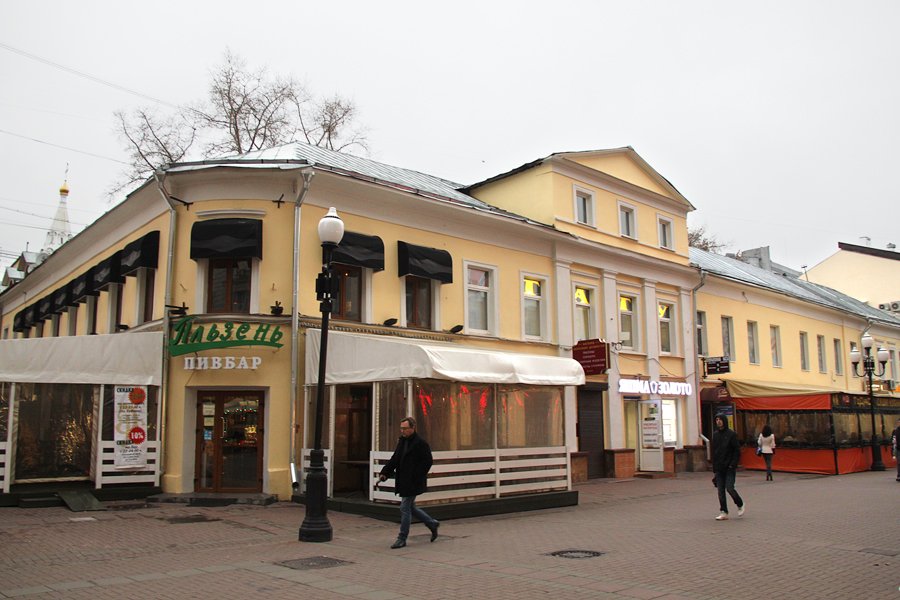Дом в два этажа с мезонином и скруглённым углом построен в начале XIX века, после пожара 1812 года. В 1820-х годах здесь работала большая аптека Богдана Панке.
В 1860-е годы в доме жил профессор Московского Университета, историк Владимир Иванович Герье. Он вошёл в историю, организовав в 1872 году Высшие женские курсы, дававшие женщинам возможность получать высшее образование. На курсах было два факультета, физико-математический и историко-литературный и существовали они без государственной поддержки, финансирование производилось за счёт поддержки меценатами и платы за обучение.
Во второй половине 1870-х годов в пристройке к дому открылся приют для неизлечимых больных, который сегодня могли бы назвать хосписом. Здесь же работало училище для слепых детей.
С 1881 года дом 36 принадлежит профессору А. П. Разноцветову, известному благотворительной деятельностью. Он завещал свою библиотеку Обществу русских врачей, выделил огромную сумму в 800000 рублей на организацию Убежища для неимущих врачей. В 1899 году в доме скончался живший здесь профессор М. К. Турский. Он – автор многих научных работ о лесе, профессор Петровской (Тимирязевской) Академии. Его труды до сих пор имеют научное значение.
Дом 36 известен и как центр книгоиздания. Здесь до 1920 года работало издательство «Посредник», основанное Львом Николаевичем Толстым в 1884 году в Петербурге. С 1892 года издательство находилось в Москве, его посещали Л. Н. Толстой, А. П. Чехов, многие другие писатели. Задачей издательства было издание и распространение в простом народе лучших классических произведений русской и иностранной литературы, а также полезных для сельского жителя книг по хозяйству. Списки произведений составлялись самим Л. Н. Толстым. Благодаря сотрудничеству с издателем и владельцем типографий Иваном Дмитриевичем Сытиным удалось снизить цену публикуемых брошюр и книг до минимума, они стоили меньше копейки. 100 книжек продавались за 80 копеек, что было очень важно для малоимущего крестьянина. Директором «Посредника» до 1925 года был писатель Иван Иванович Горбунов-Посадов. Издательство закрыли в 1935 году.
В этом же здании с 1920 года работало издательство Михаила и Сергея Сабашниковых, известное серьёзным научным подходом к издаваемым текстам и к выбору публикуемых произведений. Частная фирма была впоследствии преобразована в кооперативное издательство «Север», а в 1934 году закрыта.

















%20BEL_0521.jpg&w=1920&q=75)





